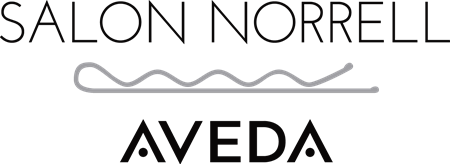how to care for your i tip hair extensions
1. Washing
Frequency: Wash your hair no more than 2-3 times a week to prevent your extensions from drying out. Over-washing can strip natural oils from both your extensions and natural hair.
Shampoo: Use a sulfate-free, gentle shampoo. Sulfates can strip the natural oils and cause your extensions to become dry and brittle.
Conditioning: Apply conditioner to the ends of the hair, not near the bonds, as product buildup can weaken the beads. You can use a leave-in conditioner for extra hydration.
Drying: After washing, gently pat the hair with a towel to remove excess water. Avoid rubbing the hair as it can cause tangling or damage.
2. Brushing and Detangling
Brush Carefully: Always use a hair extension-specific brush (a looped-tip brush is ideal) to prevent pulling on the bonds. Brush your hair from the tips to the roots in small sections to avoid tugging on the beads.
Brush More Often: Since I-Tip extensions can tangle or mat more easily, brush your hair 2-3 times a day, especially before bed. Be sure to brush around the bonds carefully to avoid dislodging them.
3. Styling
Heat Protection: If you use hot tools like curling irons, straighteners, or blow dryers, always apply a heat protectant to both your natural hair and the extensions. Heat styling can cause the bonds to loosen or the extensions to get dry.
Avoid Tight Styles: When you tie your hair back, avoid tight ponytails, buns, or braids that put stress on the bonds. Opt for loose styles to reduce tension on your scalp and the beads.
Avoid Direct Heat on Beads: When styling, be mindful not to apply heat directly on the beads, as they could melt or weaken over time.
4. Avoiding Product Buildup
Light Styling Products: Use a light amount of styling products, such as mousse, leave-in conditioner, or hair oil, and avoid heavy products like gels or waxes. Heavy products can cause buildup near the beads, leading to slippage or discomfort.
Clarify Occasionally: Every couple of weeks, you can use a clarifying shampoo to remove any product buildup, but only use it sparingly to avoid drying out the hair.
5. Sleeping Care
Protect While Sleeping: To prevent tangling and matting overnight, tie your hair in a loose braid or ponytail. Alternatively, you can wear a silk or satin scarf or sleep on a satin pillowcase to minimize friction and hair breakage.
Avoid Sleeping with Wet Hair: Never go to bed with wet hair, as this can cause tangling and breakage.
6. Maintenance and Re-tightening
Regular Checkups: Your I-Tip extensions need to be moved up every 6-8 weeks, as your natural hair will grow out and the beads may begin to slip. If you notice any beads loosening, it’s important to visit your stylist for maintenance.
Bead Adjustments: Avoid trying to move or tighten the beads yourself. Always leave this to a professional to avoid damaging your natural hair or the extensions.
7. Avoid Harsh Chemicals
Swimming: Try to avoid chlorine (such as in pools) or saltwater (like at the beach) as both can dry out the extensions and cause tangling. If you do swim, wear a swim cap or rinse your hair immediately after exposure.
Coloring: Do not color your hair extensions at home.
8. Removing Extensions
Professional Removal: It’s best to have your I-Tip extensions removed by a professional stylist to avoid damaging your natural hair. The beads are typically removed by gently squeezing them, allowing the extensions to slide out without harming the natural strands.
With proper care, I-Tip extensions can last for several months, and your natural hair will remain in great condition. The key is to follow a gentle, consistent routine, and always seek professional help for any maintenance or adjustments.
